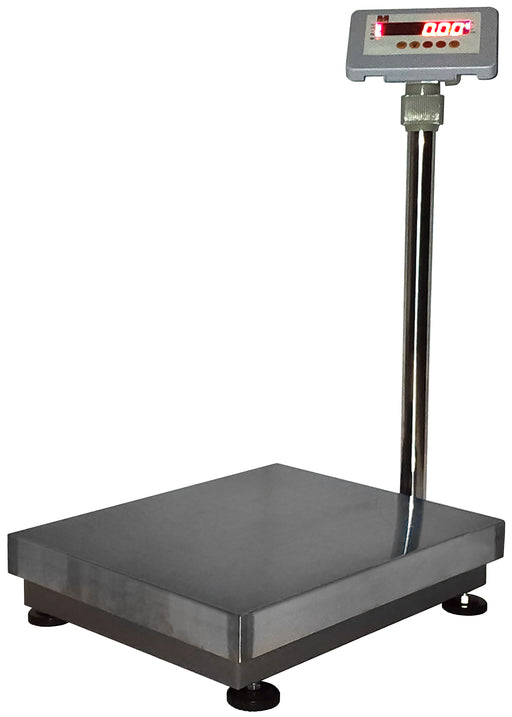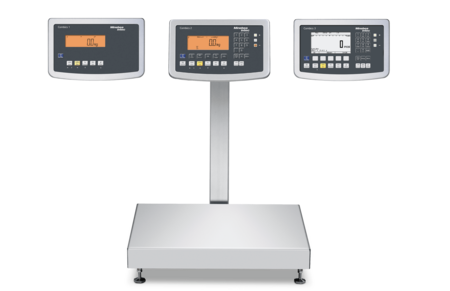A Beginner’s Guide to Understanding the Functionality of Industrial Scales
A Beginner’s Guide to Understanding the Functionality of Industrial Scales
Blog Article
Just How Industrial Scales Work: A Detailed Review for New Users
Understanding the mechanics behind industrial scales is critical for brand-new individuals who want to make sure precision in their measurements. As we discover these components, one need to consider just how these elements engage to enhance performance in varied commercial applications.
Essentials of Industrial Scales
Industrial scales are vital tools used across different industries, including production, logistics, and farming, to make certain accurate weight dimensions of heavy lots. The basic principle behind industrial ranges involves the conversion of weight into a measurable type that can be displayed digitally or analogically. These ranges utilize different mechanisms, such as tons cells or mechanical bars, to identify the weight of objects put upon them.

In addition to their dimension capabilities, industrial scales are designed to withstand harsh environments, including robust building that stands up to dust, moisture, and hefty impacts. Calibration and upkeep are essential to make sure accuracy, as also small inconsistencies can bring about significant economic ramifications. By recognizing the fundamentals of commercial scales, users can value their relevance in various commercial applications.
Sorts Of Industrial Scales
Numerous sorts of industrial ranges satisfy the diverse demands of various sectors, each made to deal with specific weighing jobs with precision and dependability. Among one of the most typical kinds are floor ranges, which are ideal for evaluating cumbersome and hefty products. These ranges generally feature huge platforms and can accommodate palletized products, making them important in warehouses and delivery centers.
One more type is bench ranges, which are frequently utilized for smaller products in production and retail setups. They offer precise measurements for products that need accuracy, such as chemicals or parts in assembly lines (Industrial Scales). For mobile procedures, mobile ranges use versatility and convenience of transport, appropriate for fieldwork or momentary setups
In applications requiring high-capacity measurements, such as in bulk product handling, crane scales and lots cells are employed. These scales can gauge lots suspended from a crane or other training apparatus, making sure safety and security and precision during procedures. Additionally, specialized scales like checkweighers are used in production lines to maintain quality assurance by ensuring that items satisfy weight requirements. Each type of commercial scale plays a crucial role in boosting functional effectiveness and precision across various markets.
Exactly How Considering Devices Work
Evaluating mechanisms are essential elements that enable exact dimension of mass throughout various industrial ranges. These devices utilize various principles of physics and engineering to provide exact weight readings, crucial for inventory management, quality assurance, and conformity with governing requirements.
One usual kind of considering system is the tons cell, which runs on the concept of stress evaluates. When a lots is applied, the lots cell warps slightly, creating an electric signal symmetrical to the weight. This signal is then transformed into a readable weight dimension by the scale's electronic devices.
An additional commonly made use of mechanism is the mechanical equilibrium, which utilizes a system of levers and weights. Industrial Scales. This approach counts on the concept of equilibrium, where the weight of the item being gauged is stabilized versus known weights, enabling straight dimension
In addition, pneumatically-driven and hydraulic ranges leverage fluid dynamics concepts to measure weight. These systems use the pressure put in by a load to figure out weight, providing high precision for substantial loads.
Appropriate Usage Strategies
When making use of commercial scales, adhering to correct use techniques is important for preserving and read this article making sure exact dimensions tools honesty. It is important to choose the appropriate range for your specific application, as scales vary in ability and precision.
Before considering, make certain that the range is put on a steady, level surface area without vibrations or disruptions. This will certainly help to lessen errors brought on by outside factors. In addition, adjust the range according to the manufacturer's specifications before utilize, making sure that it is working correctly.
When placing things on the scale, distribute the weight equally to prevent tipping or damaging the tools. Constantly permit the scale to support before tape-recording the weight, as changes might take place throughout initial positioning. For bulk products, utilize containers that are ideal for the scale dimension to protect against overloading.
Moreover, prevent putting chilly or overly warm items directly on the scale, as temperature level variants can affect accuracy. Lastly, maintain the considering system tidy and cost-free of particles to avoid contamination and make certain reputable outcomes. By complying with these strategies, individuals can take full advantage of the performance and long life of their commercial ranges.
Upkeep and Calibration Tips
Guaranteeing the longevity and accuracy of commercial scales calls for attentive upkeep and routine calibration. A precautionary upkeep schedule is vital; it should include regular examinations to identify damage, particularly on load cells and other delicate elements. Consistently cleansing the scale's surface and making certain the surrounding location is without particles will aid preserve its honesty and performance.
Calibration is similarly vital and need to be done at regular intervals or whenever the range experiences substantial adjustments in temperature, humidity, or physical variation. Utilize certified calibration weights that are traceable to nationwide requirements for accuracy. Paper each calibration session thoroughly to track performance with time and determine any type of fads or recurring problems.
Train all operators on correct range use and upkeep methods to guarantee constant performance and accuracy. By sticking to these maintenance and calibration pointers, individuals can enhance the dependability of their industrial scales, ensuring optimum procedure in any kind of setup.
Conclusion

Understanding the auto mechanics behind commercial scales is crucial for new individuals that desire to ensure accuracy in their measurements.Industrial scales are necessary devices made use of throughout numerous markets, including manufacturing, logistics, and agriculture, to make certain accurate weight dimensions of hefty lots. The fundamental principle behind commercial scales involves the conversion of weight into a quantifiable type that can be presented electronically or analogically. By recognizing the fundamentals of commercial ranges, individuals can appreciate their importance in various industrial applications.
In final thought, recognizing the operation and maintenance Continue of commercial ranges is crucial for making certain precise weight measurements in different applications. (Industrial Scales)
Report this page